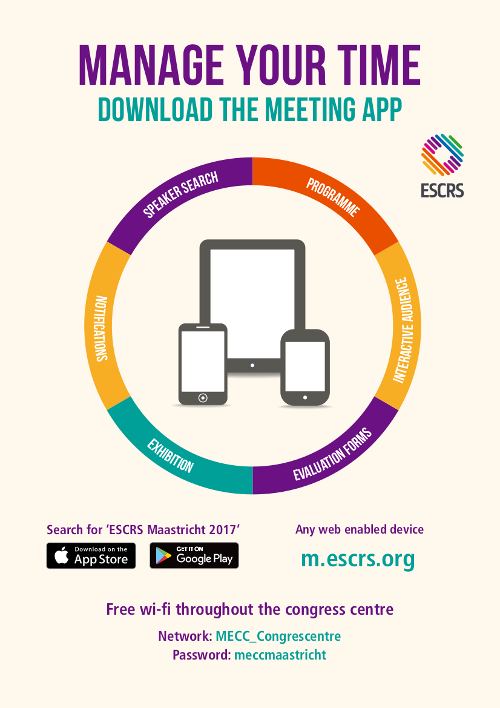4 years of femtosecond laser-assisted cataract surgery
(results will display both Free Papers & Poster)
Session Details
Session Title: Cataract
Session Date/Time: Saturday 11/02/2017 | 08:30-11:00
Paper Time: 08:30
Venue: Auditorium 1
First Author: P. Hoffmann GERMANY
Co Author(s):
Abstract Details
Purpose:
A lot of data on fs-laser assisted cataract surgery (FLACS) emerged during the last two years. Most of it is focussed on process quality, complications and innovative applications. We wanted to know if there is proof of comprehensible improvement for the patient.
Setting:
Private eye clinic in Germany
Methods:
Until 20-10-2016, 1364 FLACS procedures have been performed by two experienced surgeons using the B&L Technolas Victus fs-Laser platform. A 5.0 to 5.2 mm capsulotomy was centred on the presumed line of sight. Nucleus cuts were either a radial pattern or モfrench friesヤ style fragmentation. Incision width was 2.2 mm. As a measure of result quality, visual acuity, corneal swelling, endothelial loss, axial IOL position, wavefront aberrations and refractive prediction error were examined. 140 eyes operated manually acted as a control group. In a smaller subgroup (n = 30) IOL decentration and tilt was measured with Schaeffelメs purkinjemeter.
Results:
Slight improvements could be observed regarding corneal swelling and ECC loss. We found no significant or relevant differences between segmentation and モfrench friesヤ fragmentation for swelling or ECC loss. Refractive prediction error was not different at 1 month, but at 6 months the FLACS eyes had a smaller standard deviation 0.34 vs 0.43 D. The predictability of axial IOL position was slightly better in the Femto group. Higher order aberrations were slightly lower in the FLACS group, especially coma. Anterior capsular rupture rate was 0.8% (slightly higher than phaco), posterior capsular rupture rate was 0.2% (same as phaco).
Conclusions:
FLACS is an innovative surgical procedure coming at a very high expense. For the patient, it is important to know if any improvement in result quality over conventional phacoemulsification can be gained. This gain could be due to better positioning of the IOL and more gentle removal of the nucleus. We could prove slightly less endothelial trauma with FLACS and better lateral (less coma) as well as better axial IOL positioning (refractive predictability) ? 6 months after surgery. FLACS is a slight but comprehensible improvement on already very good quality manual phacoemulsification.
Financial Disclosure:
None



